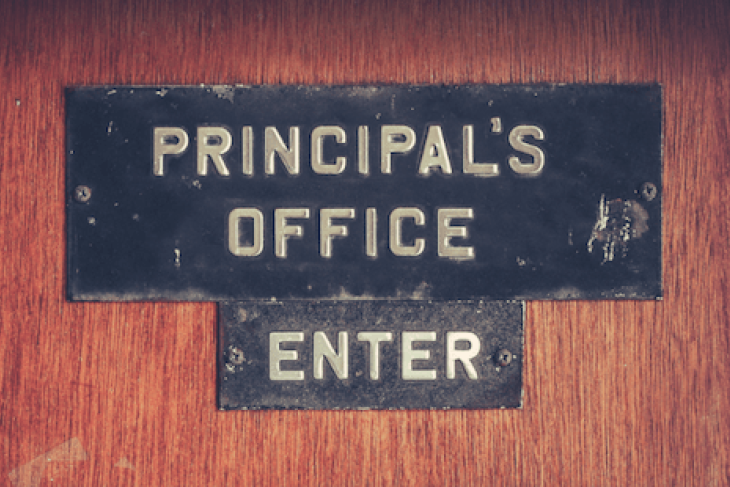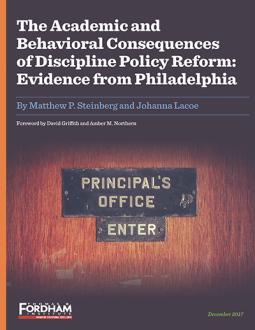Today, Fordham released a new report suggesting changes to Ohio’s school report cards to help parents and taxpayers get the best information about the performance of their schools and districts. This is the preface to that report.
Most of us can remember getting report cards as kids. Sometimes the grades would be a validation of a job well done; sometimes they were disappointing, considering all the effort we had made in class. Sometimes—let’s admit it—the grades were low but also fair, given the quality of our work or the lack of effort we had put into it.
Regardless of how we felt at the time, most of us recognize that report cards played an important, if not always pleasant, role in our education. We needed the feedback that they generated in order to know our strengths and weaknesses, and they were important to parents and guardians who could offer help when our grades signaled that greater support was needed.
Likewise, the educational health of our schools hinges in no small part on periodic reviews of how they’re doing. Over the past two decades, states have developed annual report cards intended to offer an objective view of the performance of individual schools and districts. What’s on those report cards is used by families making decisions about which schools to choose for their daughters and sons, by taxpayers seeking evidence that their dollars are being well spent, and by decision-makers tasked with holding schools accountable for student learning and—most importantly—helping them improve when necessary.
In some respects, Ohio’s report cards do a good job informing the public about school quality. Most notably, the user-friendly A-F grading system offers a clear view of performance that’s a long way from yesterday’s bureaucratic jargon (one recalls with chagrin the state’s old “continuous improvement” rating for many schools). For the most part, the grades are properly grounded in hard data taken from state assessments or college entrance exams. Several of the metrics rightfully encourage schools to pay attention to the achievement of all students, rather than focusing solely on children who haven’t yet cleared the “proficient” bar. Especially praiseworthy are the Performance Index—a weighted measure that awards additional credit for high achievers—and value added scores that account for the growth of individual pupils.
Yet Ohio still has ample room for improvement. For starters, Buckeye school report cards have gotten unwieldy in size, containing more than a dozen letter grades with a dizzying array of calculations used to generate these ratings. A second and somewhat related issue is that report cards rely too heavily on “status” measures—e.g., pupil proficiency or graduation rates—that largely correlate with demographics and prior achievement. As a result, Ohio unfairly downgrades high-poverty schools due in part to factors outside of their control. This violates what Douglas Harris, a Tulane University researcher, calls the “cardinal rule of accountability”: holding schools to account for that which they can do something about.
This paper offers suggestions to improve Ohio’s school report cards. Most of them would require legislative action—much of the report card framework is a matter of statute—while others could be handled by the State Board of Education or Ohio Department of Education (ODE). If these proposals were implemented, Ohio would move towards a simpler, fairer, and more balanced approach to grading districts and schools.
Why are we offering these proposals now? Didn’t ODE just submit the state’s Every Student Succeeds Act (ESSA) plan—including policies related to report cards—to the U.S. Department of Education? It’s true that ODE recently did this to comply with the federal law. But ESSA’s overarching intent is to devolve authority over education policy back to the states. As Senator Lamar Alexander—one of the chief architects of the law—declared, “The national school board era has come to an end.” State policymakers now have the ability to create report cards that make sense to Ohioans, including the flexibility to make changes to them when necessary. In addition, though ODE’s ESSA planning process engaged many stakeholders, this wasn’t the appropriate forum to make substantive revisions to school report cards. That’s primarily the job of lawmakers, as the accountability framework behind the report card is primarily a matter of state law. If elected officials decide to make changes (within, of course, the basic parameters of ESSA), ODE can submit the requisite paperwork to Washington to amend the state plan.
After report cards were released this fall, media coverage suggested that several state legislators, including the Senate and House education committee chairs, would be open to reexamining this issue. That’s good news. We agree that improvements are needed, yet they also need to be made thoughtfully. With these suggested changes, a much improved report card can become a reality.
We encourage you to download the full report.




